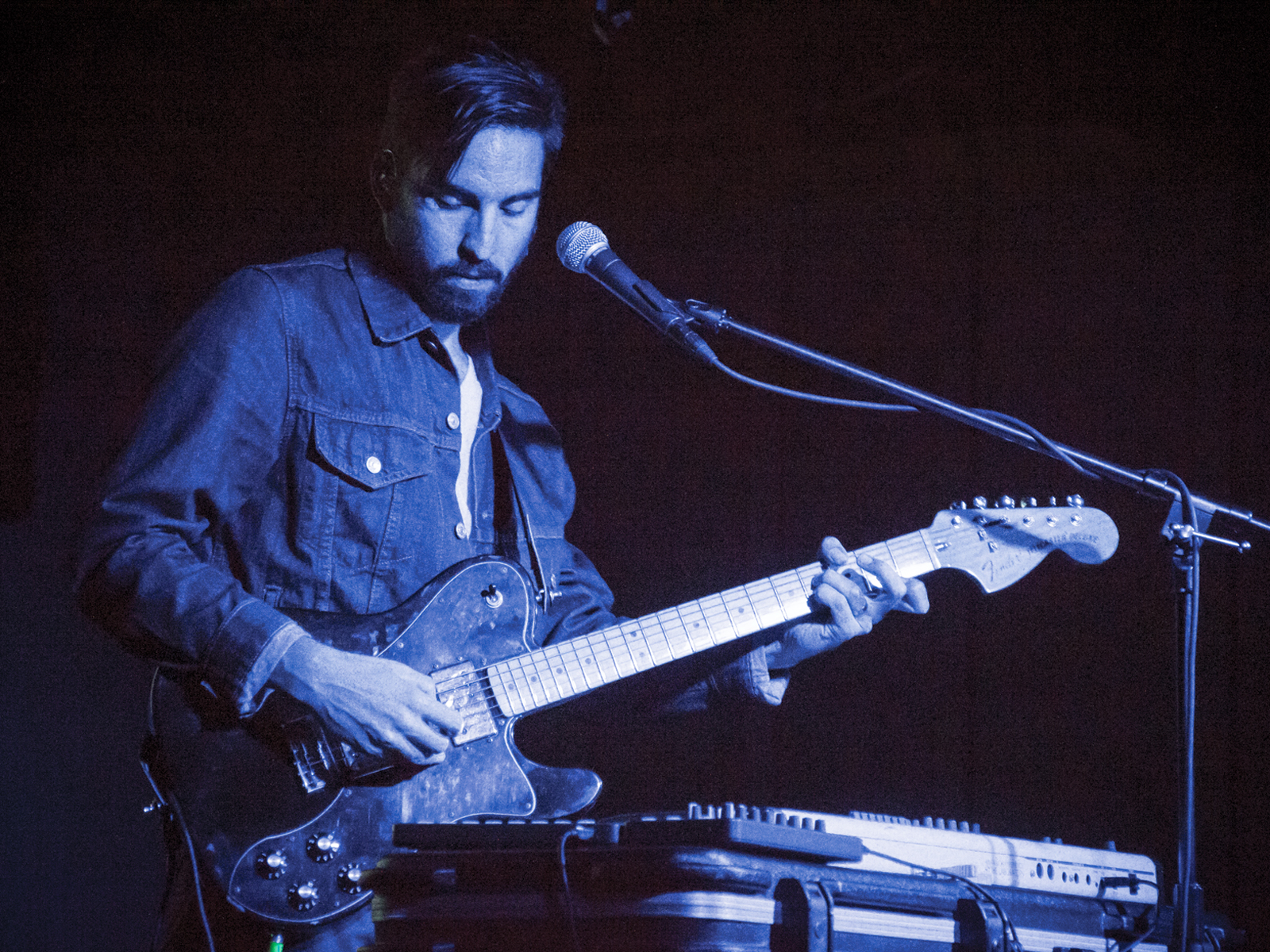
I had never been a fan of the musical genre known as ambient music. It was probably because I had hardly listened to it. That was before Jimmy LaValle appeared at the Barn performing many songs that he recorded as a part of his solo project The Album Leaf. Calling his ambient music “transcendent” or “emotional” doesn’t do it justice — all I can say is, I’m definitely a fan of ambient music now, thanks to Jimmy LaValle.
The night started with the audience sitting in chairs and watching a 45-minute-long short film titled “Beyond There.” It was directed by Michael Raines and put together by LaValle and his backing band in 2011. The film highlights the difficulties surrounding their first tour in China and Japan. At one point LaValle points out that they once had to perform at a bar no bigger than half the Barn’s stage with a handful of people for an audience. But he was ultimately happy with the trip, saying that even with the small amount of revenue taken from the tour, traveling and performing for fans was always the greater experience. The film ended with LaValle and his backing band sitting at a bar singing along to Journey’s “Don’t Stop Believing,” which tied a nice thematic bow onto the film.
After the film’s end, LaValle came onstage and answered a few questions from the audience. Somebody asked him if he had any direct musical influences, which he replied with no. And that’s really the heart of ambient music as a whole. Listening to ambient music is like listening to a tone poem or reading “Finnegan’s Wake.” Only the most basic structures of a song are used, such as repeating the few key notes of a melody or chord. But stylistically, an ambient song can go in any direction using any piece of recorded sound known to man, although most songs usually use a few general instruments, such as a keyboard, guitar and drum machine. Imagine if Albert Einstein or Salvador Dali were given the score of elevator music and told to vastly improve it — that is ambient music.
After holding his short Q-and-A, LaValle set up his own one-man show and several of his songs for the remainder of the evening. He usually played on a huge keyboard that held varying arrays of buttons, knobs, switches, pedals, levers and blinking lights. It was the most sophisticated, high-tech keyboard I had ever seen in my life. LaValle would spend all of his time standing up there running his fingers through the complicated workings of that keyboard. He’d push something here, and an electronic chord would come to life out of nowhere; he’d twist something there, and a basic beat or drum pattern would appear to give the emergent sound a rhythmic direction. He also occasionally strummed a few understated lines of melody on his guitar with a drum pattern and chord set in place for an entire song.
LaValle also incorporated visual art into his set, which is something he says he usually does. Behind him on stage were several different videos of surreal imagery and color that heightened the transcendent nature of his music. Together, it set the overall tone of the Barn. It’s that type of feeling you get when you lay on your back, smeared with dirt and sweat as you look over Riverside atop the C; or when you’re at the beach with a fire going as you watch the ocean stroke the sand. LaValle’s performance was the very thing you’d want to be listening to when you count the stars.
The Barn is known for putting on great acts and loud bands, but Jimmy LaValle was something else. It was great to get away from midterms, from school, from the different pains of life and just unwind with something so soothing. His music brought my mind to Heaven.








